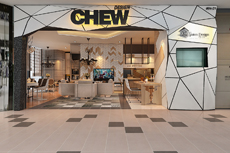Newly learned anti-biotic eliminates pathogenic agents while not amount of resistance
The discovery of this particular innovative ingredient worries particularly long-used medical morals and holds terrific assurance for treating a range of menacing contamination, claims Northeastern School Notable Professor Kim Lewis.http://www.samedayessay.me/ Pictures by Brooks Canaday/Northeastern University or college.
For years, pathogens’ resistance to antibiotics has put them a stride before scientists, which happens to be causing a general public well being crisis, as per University Distinguished Professor Kim Lewis . But also in new research, Lewis and his awesome colleagues give a freshly discovered antibiotic that eliminates pathogens with no need of encountering any detectable opposition-a finding that challenges long performed scientific attitudes and retains awesome commitment for the treatment of prolonged infections like tuberculosis and people brought on by MRSA.
The studies, which happens to be making headlines throughout the globe, was published Wednesday around the journal Dynamics .
Northeastern researchers’ pioneering try to make a unique way of escalating uncultured bacteria resulted in the discovery of antibiotic, known as teixobactin, and Lewis’ research laboratory experienced a key function in analyzing and evaluation the compound for resistance from pathogens. Lewis, that is the paper’s contribute writer, asserted this represents the main discovery associated with the antibiotic to which resistance by mutations of pathogenic agents have not been uncovered.
Lewis and Northeastern biology professor Slava Epstein co published the document with colleagues out of your University of Bonn in Germany, NovoBiotic Pharmaceuticals in Cambridge, Massachusetts, and Selcia Limited in britain. The study club claims teixobactin’s discovery provides a offering new opportunity to help remedy continual infections brought on by staphylococcus aureus, or MRSA, which are seriously resistant to antibiotics, together with tuberculosis, that requires a combination of therapies with negative secondary effects.
The screening of garden soil microorganisms has produced most antibiotics, but only 1 percent of those will raise inside of the laboratory, and this limited source was overmined from the 1960s, Lewis mentioned. He and Epstein dedicated a long time trying to tackle this issue by tapping to a new way to obtain antibiotics past persons created by synthetic means that: uncultured bacteria, that will make up 99 percent of all species in additional environments. They developed a fresh means for thriving uncultured bacteria to their natural environment, which brought about the founding of NovoBiotic. Their methodology involves the iChip, a miniature product Epstein’s teams created which may isolate and allow thrive individual tissues as part of their natural environment and in so doing provides doctors with much enhanced use of uncultured bacteria. NovoBiotic has considering the fact that assembled about 50,000 stresses of uncultured bacteria and discovered 25 new antibiotics, which teixobactin is most likely the most recently released and quite a few interesting, Lewis reported.
The antibiotic was discovered after a routine evaluating for antimicrobial material by using tactic. Lewis then proven the compound for resistance development and failed to come across mutant MRSA or Mycobacterium tuberculosis resistant to teixobactin, that was seen to bar several different targets within the cell structure synthesis pathway.
“ Our impression is often that characteristics produced a compound that changed to become without any resistance,” Lewis pointed out. “This challenges the dogma that we’ve operated while under that bacteria will forever evolve resistance. Very well, perhaps not in this case.”
Gerard Wright, a professor from the Department of Biochemistry and Biomedical Sciences at McMaster University and who had been not involved in this researching, examined the team’s function in a separate article for Aspect published in concert together with the new information document. Within his blog post, Wright documented that while it remains to be to be seen no matter if other mechanisms for resistance alongside teixobactin stem from the environment, the team’s job can lead to identifying “other ‘resistance light’ prescription antibiotics.”





